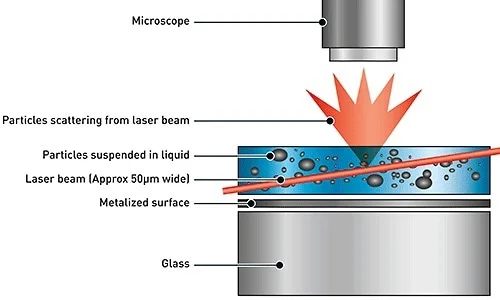Introduction
NTA testing is a technique used to measure the size and distribution of nanoparticles in a sample. This technique is widely used in the fields of nanotechnology, material science, and biomedicine to study the properties of nanoscale materials. In this article, we will explore the basics of NTA testing, its applications, and the advantages and limitations of this technique.
What is NTA Testing?
NTA stands for nanoparticle tracking analysis. It is a technique that uses light scattering and microscopy to measure the size, concentration, and distribution of nanoparticles in a sample. In NTA testing, a laser beam is used to illuminate the sample containing nanoparticles. The movement of these nanoparticles is then tracked and analyzed using specialized software to determine their size, concentration, and distribution.
Applications of NTA Testing
NTA testing is used in various fields such as nanotechnology, material science, and biomedicine. It is commonly used in the development and characterization of nanoparticles for drug delivery, imaging, and other applications. In biomedicine, NTA testing is used to study the behavior of nanoparticles in biological systems, including their interaction with cells and tissues. In material science, NTA testing is used to study the properties of materials at the nanoscale, such as the mechanical, optical, and magnetic properties.
Advantages of NTA Testing
One of the main advantages of NTA testing is its ability to measure the size distribution of nanoparticles in a sample. This information is critical in the development of nanoparticles for various applications. NTA testing is also highly sensitive, allowing researchers to detect nanoparticles at low concentrations. It is also a non-destructive technique, which means that the sample can be reused for further analysis. Additionally, NTA testing can be performed on a wide range of samples, including biological samples, without the need for extensive sample preparation.
Limitations of NTA Testing
While NTA testing has many advantages, it also has some limitations. One of the main limitations is that it is not suitable for measuring the size of particles that are larger than 1 micrometer. Additionally, NTA testing may not accurately measure the size of particles that are highly polydisperse or aggregates of multiple particles. Furthermore, NTA testing is a relatively time-consuming technique, and the analysis can be subjective, depending on the quality of the images obtained.
NTA Testing vs. Other Techniques
NTA testing is one of several techniques used to measure the size and distribution of nanoparticles. Other techniques include dynamic light scattering (DLS) and scanning electron microscopy (SEM). DLS measures the intensity of scattered light to determine the size distribution of nanoparticles. It is a fast and simple technique, but it has limited accuracy for polydisperse samples. SEM uses electron beams to visualize and measure the size of nanoparticles. While it provides high-resolution images, it requires extensive sample preparation and may damage the sample.
Conclusion
NTA testing is a valuable technique for measuring the size, concentration, and distribution of nanoparticles in a sample. It has many advantages, including its sensitivity, non-destructiveness, and applicability to a wide range of samples. However, it also has some limitations, such as its inability to accurately measure the size of highly polydisperse particles. Overall, NTA testing is a powerful tool for the development and characterization of nanoparticles in various fields, including nanotechnology, material science, and biomedicine.
For more news click thebritaintimes.co.uk
